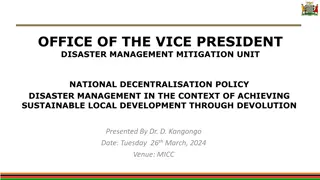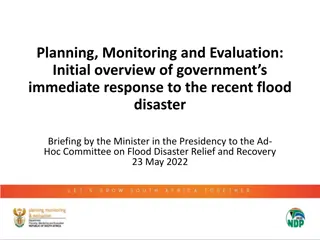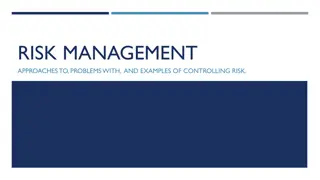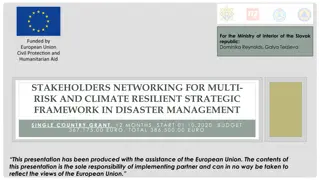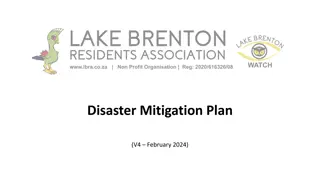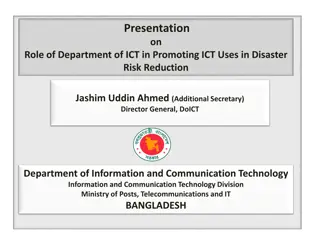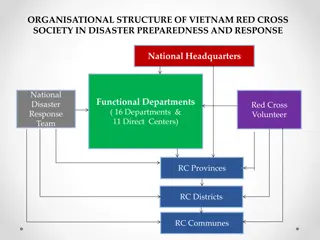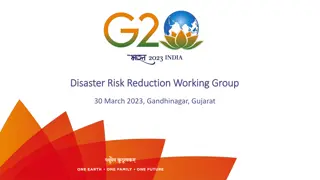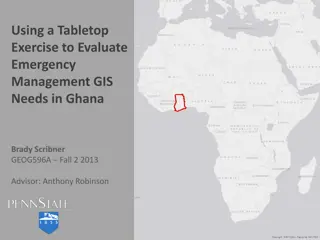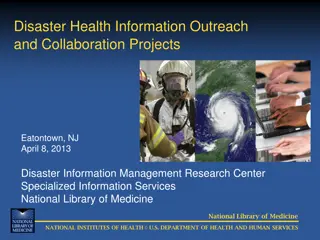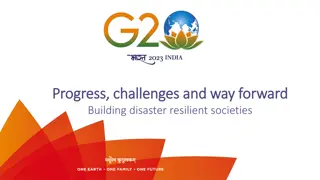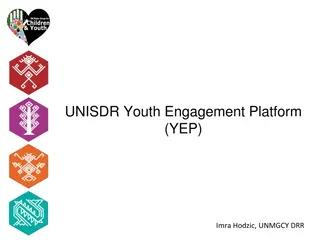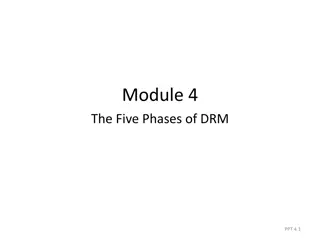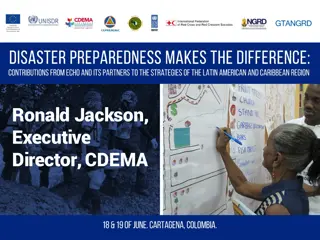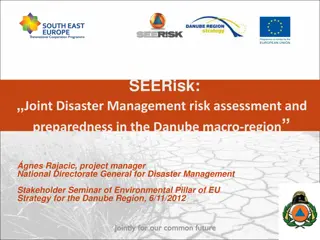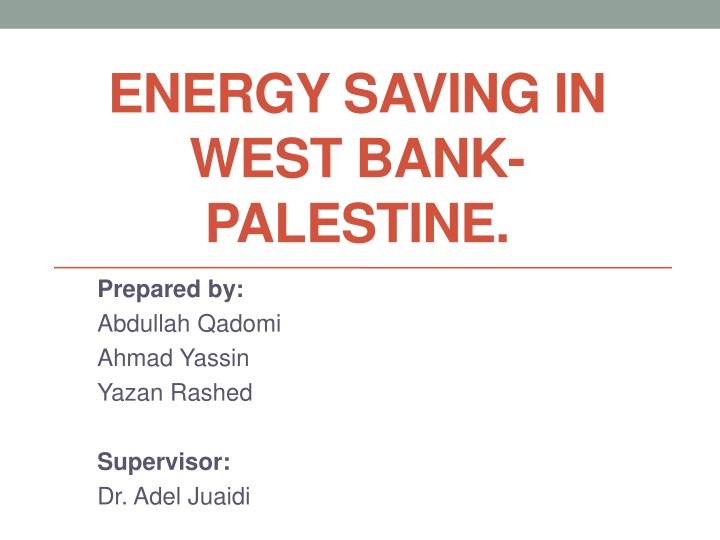
Capacity Building for Disaster Risk Management - Challenges and Paradigm Shifts
Capacity building and challenges in disaster risk management are discussed, highlighting the shift towards mitigation and preparedness. Key issues such as multi-hazard vulnerability assessment, changing risk scenarios, and the importance of post-disaster assessments are addressed. The role of new policy frameworks and the impact of environmental changes on disaster risk are also explored. Emerging issues related to environmental change as a driver of risk and vulnerabilities are identified.
Uploaded on | 2 Views
Download Presentation

Please find below an Image/Link to download the presentation.
The content on the website is provided AS IS for your information and personal use only. It may not be sold, licensed, or shared on other websites without obtaining consent from the author. If you encounter any issues during the download, it is possible that the publisher has removed the file from their server.
You are allowed to download the files provided on this website for personal or commercial use, subject to the condition that they are used lawfully. All files are the property of their respective owners.
The content on the website is provided AS IS for your information and personal use only. It may not be sold, licensed, or shared on other websites without obtaining consent from the author.
E N D
Presentation Transcript
ENERGY SAVING IN WEST BANK- PALESTINE. Prepared by: Abdullah Qadomi Ahmad Yassin Yazan Rashed Supervisor: Dr. Adel Juaidi
Outline Introduction Methodology Case Study Results and Analysis Conclusion and Recommendations
Introduction Energy saving improved by: 1. Renewable energy 2. Lighting system improvement 3. HVAC system
Introduction The most important issue facing the world in our time is energy, which is the basis for most environmental, sustainable and economic issues. High electric energy consumption is one of the major issues in global use and can be a major problem for emerging countries.
Methodology Analysis by Excel: 1. Before PV installation 2. After PV installation Suggestions: 1. LED lighting 2. Adding 9 panels (PV)
Case study Faqqua Association Cooperative Consumer building in Faqqua-Jenin, which supported a renewable energy building mechanism. The data collected on the basis of this building.
Results and Analysis Annual Energy Consumption and PV Supplied Energy of the Case Study 22225 25000 20000 Annual Energy (KWh) 14570 15000 10000 5000 0 Consumption of Grid Supply to Grid
Results and Analysis Annual Cost before and after PV System. 15334 16000 14000 12000 Annual Cost (NIS) 10000 8000 3827.5 6000 4000 2000 0 Before PV After PV
Results and Analysis Energy Saving Categories 17% PV Installation 10% LED Lighting 73% Adding 9 Panels .
Results and Analysis Economic Analysis for the System Payback period is 7 years. 12,250 16,228 0 2 years 1 year 92,160 1,487 14,205.6
Results and Analysis Comparison between Data Before and After PV System and the Suggestions. Annual Consumption from Grid (KWh) (NIS) Before PV 28,240 15,334 After PV 7,655 3,827.5 LED System 1,663.2 831.6 Adding Nine Panels Annual Cost Initial Cost (NIS) 0 92,160 504 Energy Saving (KWh) 0 2,0585 2,772 Energy Saving (%) 0 73 10 System 12,331.6 0 0 4,883 17
Conclusion and Recommendations The initial cost is the main reason for increasing of payback period in PV system. Energy star certified air conditioning is advised to install for saving the products outside the refrigerator such as flour.



